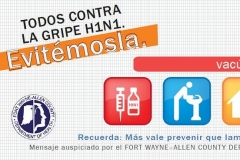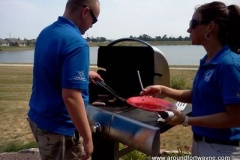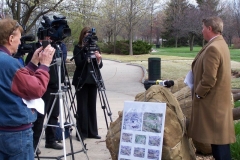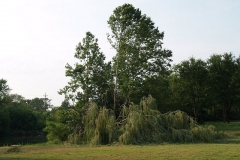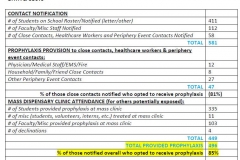![]()
Press release from
The scoop on shoveling snow safely
Removing snow and ice from driveways and sidewalks after a snowfall is an important chore, but it can also be a dangerous one for those with heart and lung conditions.
A recent study conducted at the Center for Injury Research and Policy of The Research Institute at Nationwide Children’s Hospital in Ohio found that an average of 11,500 snow shoveling-related injuries and medical emergencies were treated in U.S. emergency departments from 1990 to 2006. More than half of the hospitalizations and 100 percent of the 1,647 fatalities associated with shoveling snow were due to cardiac-related events.
Cold weather puts an extra strain on the heart, and shoveling is already a vigorous physical activity even for healthy individuals. Shovelers also are at risk for hypothermia, a decrease in body temperature, if they are not dressed appropriately for the weather conditions.
If you have heart disease, high blood pressure or high cholesterol, or a history of heart attacks, it is best to avoid shoveling snow or performing other hard work in the cold.
“It is always best to consult with your physician before engaging in strenuous activity that could lead to additional health concerns,” said Dr. Michael Mirro, cardiologist, Fort Wayne Cardiology and medical director, Parkview Research Center. “We want residents in our community to be as safe as possible during severe winter weather.”
The same warning applies to smokers and those with asthma or chronic lung conditions.
“The combination of cold weather and physical exertion can often precipitate and worsen asthma and other related lung problems,” said Scott Mann, MD, medical director of emergency services, Dupont Hospital.
“If you begin to experience shortness of breath, it’s wise to stop what you’re doing. If the condition persists—or if you begin to experience chest pain—call 911 immediately because in the case of a heart attack, time is muscle” Mann said.
Whenever possible, try to avoid shoveling snow by hiring someone to do it or using alternatives including salts, deicing sprays, heated sidewalk mats or snow blowers.
If you must shovel snow, the Fort Wayne-Allen County Department of Health recommends taking the following steps to minimize your risk of injury:
- Warm up with light stretching exercises.
- Wear warm clothing, including a hat, scarf, gloves and slip-resistant, high-traction footwear.
- Avoid drinking caffeinated beverages or energy drinks which can elevate your heart rate.
- Choose an ergonomic shovel with a small blade. A shovel that’s too long, too short, or hard to grip will make the work more difficult.
Try to push the snow off to the side rather than lifting it. If you must lift it, squat with your knees bent to relieve pressure on your back. Don’t tackle a foot of snow at once, but remove it several inches at a time. Walk with the shovel to where you want to dump the snow rather than twisting your body to throw the snow over your shoulder.
- Avoid large shoveling jobs by clearing snow several times throughout the day.
- Pace yourself by taking frequent rest breaks.
If you are diabetic, be sure to check your blood sugar after shoveling to ensure that your blood sugar does not drop too low.
For more information on winter weather safety, go to www.allencountyhealth.com or www.cdc.gov.
Prepare yourself for winter weather
- When weather is extreme, try to stay indoors.
- If you must go outside, wear layers of windproof and waterproof clothing and a hat, scarf and gloves.
- Do not ignore shivering as it is an important first sign that the body is losing heat. Persistent shivering is a signal to return indoors.
Prepare your home
- Listen to weather forecasts for the latest conditions.
- Have chimneys and flues inspected and test smoke alarms and carbon monoxide detectors.
- When using fireplaces, space heaters, or other heating devices, follow the manufacturer’s instructions carefully and make sure they are properly vented to the outside.
- Do not use generators, charcoal grills, camp stoves, or other gasoline/charcoal-burning devices indoors.
Prepare your vehicle
- Keep your vehicle fueled and in good working order.
- Have an emergency kit in your vehicle with blankets, flashlight, extra batteries jumper cables, and first aid supplies.
- Tell someone where you are going and when you expect to return.
- Avoid traveling on ice-covered roads, overpasses, and bridges if at all possible.
- Stay in your vehicle if you get stranded and try to make yourself visible to rescuers.

